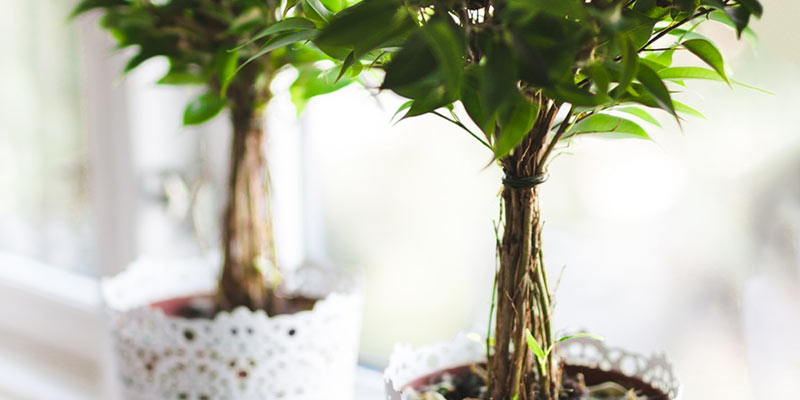
Gardening is a relaxing hobby and a great way to add natural beauty to your home. With the right plant setup, gardening can even reduce your grocery bill. Many aspiring gardeners (especially apartment dwellers) are faced with space issues, but that doesn’t have to stop you from flexing your green thumb. The inside of your home provides ample opportunities for gardening—it’s all about using space wisely, establishing proper lighting, and selecting the right plant for your space situation.
It Starts with a Little Light
The first step to setting up an indoor garden is establishing a proper light source, be it natural or manmade. Scope out your space and determine which parts of your home get the most natural light. If natural light is a concern, you can set up an indoor grow light system to ensure that your plants are always perfectly lit.
Additionally, it’s important to select the right plants for your lighting situation. If your natural light is limited, choose plants that don’t require much light, or make sure that those plants have access to a grow light.
Finding the Right Spot
Indoor gardening can happen practically anywhere, so it’s important to assess your wants and needs. If floor space is a concern, consider an indoor vertical garden which simply requires a single wall. An indoor vertical garden is the perfect setup for plants that can live in full shade, but it can also accommodate other plants if set up near a natural light source.
Lining up plants or stacking them in rows can add a surprising amount of character to your space. Decorative plants, herbs, and lettuces can easily be grown in a stacked setting on a wall. If you’re not cramped for space, setting up your garden on a large, open-sided shelf can provide an aesthetically pleasing option. An in-between option is an indoor ladder planter, which provides ample plant storage without taking up much floor space.
Using Your Space Wisely
While walls and shelves can provide ample indoor gardening options, utilizing your ceiling can often be the most practical, decorative option. A staghorn fern and a marble pothos are examples of plants that thrive in indoor, ceiling-mounted settings. Also, air plants (plants that absorb nutrients through their leaves instead of their roots) in glass globes can offer a beautiful, modern indoor décor option. And as a bonus, hanging plants are easily kept out of reach from children and pets.
Selecting the Right Plants
To add color to your space, consider an African violet (it’s one of the lowest-maintenance flowering plants around!).
For leafy plants to grow indoors, try the peace lily, the paddle plant, or a failsafe cactus. If you’re looking to grow vegetables indoors, it’s important to choose an option that can thrive without being outside.
The most straightforward option is lettuce, as many varieties are easy to grow indoors. To branch out, try carrots, arugula, kale, scallions, tomatoes, or ginger.
Just Add Water
Each plant is different, but as a general rule, it’s good to maintain moist or somewhat moist soil. You can test the moisture by dipping your finger in the soil. Most plants are fine with weekly watering. The following tips can help you get the most out of your indoor watering routine:
- Watch for wilting or yellowing, as those are signs of stress.
- Try to water your plants in the morning, as it gives the plant a chance to dry out during the day.
- Adjust your water frequency based on the season, as lighting will also naturally adjust.
- When selecting your water, aim to use rainwater, well water, or bottled water. Tap water is alright if it isn’t too hard.
- Avoid softened water.
